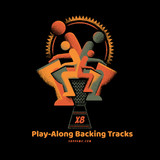Djembe and African Dance
African dance's popularity is due in large part to the involvement of djembe players.
African dance is a means of creating community and of celebration. African dances teach people about their society and morals, while urging them to work and entertaining them. It is an important aspect of communication, as dance can be used to chastise or praise individuals. Dance is also used for religious festivals and prayers.
Traditional dance emphasizes the collective, with groups of people performing at once. Though the dancers may be separated into age or gender groups, dances articulates the togetherness of the community.
African dance can be difficult to learn, as it utilizes polyrhythm, in which limbs, pelvis and chest move separately, to different rhythms.
Dancers use their entire bodies to express themselves.
The most recognizable aspects of African dance involve the body of the dancer. Knees are bent, feet are stretched, no line remains stationery, always moving. There are many centers of motions, due to polyrhythm. In traditional African dance, there was a great emphasis on the earth bond.
African dance classes are becoming popular as a result of their association with Modern dance. Modern dance borrows heavily from more primal forms of movement, like the dance of the Masaii where performers jump up and down repetitively. The dance has found a huge market for people interested in stress relief, as well as those interested in the aerobic benefits.
Enrolling in African dance classes is a simple way to gain exposure to another culture. Beyond exercise and learning a new skill, African dance classes provide opportunities to join a community. What better way to build a village than to do so by swinging hips, stomping feet and swaying arms?
Djembe drummers lead African dance classes. A djembe drum is a West African hand drum with a body that is hand-carved from a single piece of wood, with a goatskin drumhead. Serious drummers usually buy African djembes, because they are made with higher quality materials than American drumheads. African goats have tougher skins, which makes for a better drumhead, and American drums are frequently made of plastic, fiberglass, or any number of manmade materials, which changes the sound created.
The drumbeat is the heart of many African communities. Drums are used as a call for meeting, and playing the drums in concert with a group of people creates a sense of solidarity and togetherness. The drum allows connection.
The drum also allows for polyrhythm, one of the central parts of African dance. The djembe player can vary the sound of the instrument, changing the mood or meaning of the song, as well as the course of the dance. The djembe player controls the dance, creating the rhythm and feeling of the music.
The beauty of the music of the African dance is that the djembe is portable, so the music is mobile. Dance doesn’t occur simply in studios, it follows the djembe player like children following the Pied Piper. Even better, members of the dancing troupe can take over for the djembe player, due to the ease of performance and learning.
http://www.flickr.com/photos/seattlemunicipalarchives/ / CC BY 2.0
Recent Posts
-
X8 Drums Play-Along Backing Tracks
The new X8 Play-Along Series is being produced for our musician friends wanting a fresh way to work …9th Feb 2025 -
What is the Best Size Djembe for Beginners?
If you're new to the world of percussion and interested in learning the djembe, you're in for a t …16th Jul 2024 -
The Benefits of Becoming a Drumming Teacher: Transforming Passion into Profession
Why become a drumming teacher? Becoming a drumming teacher is an excellent way to share your pas …22nd May 2024



